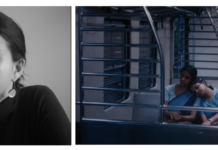A 1797 oil on canvas painting by Spanish painter Franciso Goya, The Black Duchess is a striking portrait that is being currently exhibited at The Royal Academy of Arts (RA) in London, one of England’s oldest society concerned solely with the fine arts. Part of a wider presentation titled, Spain and the Hispanic World, offers you to discover and learn the rich story of Spanish and Hispanic art and culture from the ancient world to the early 20th century through over 150 curious works: from paintings, sculptures, silk textiles, ceramics, silverwork, precious jewellery, maps, drawings illuminated manuscripts and stunning decorative lacquerware from Latin America.
One of the standout portraits is that of the 13th Duchess of Alba, María del Pilar Teresa Cayetana de Silva Álvarez de Toledo y Silva Bazán (1762–1802). Goya’s portrait of the Duchess of Alba was one of the most striking figures at court in the late 18th century. Thirty-five years old, she was just widowed, and considered beautiful. It’s been recorded that a French visitor to Madrid, declared that “the Duchess of Alba has not a single hair on her head that does not awaken desire.”
This is part of the many possessions from the Hispanic Society Museum and Library, home to the most extensive collection of Spanish art outside of Spain. Founded in New York in 1904 by wealthy philanthropist Archer M Huntington, it is being presented for the first time in the UK and it is giving visitors a chance to trace the great diversity of the cultures and religions – from Celtic to Islamic, Jewish and Christian – that have shaped and enriched what we today understand as Spanish culture.
The Royal Academy exhibition is intriguing, it transports you back in time and gives you an insight into the creation and journey of Spanish culture. From Roman marble sculptures and a striking mosaic head of Medusa to the Islamic presence, colourful glazed ceramics and weavings including a spectacular silk shawl from circa 1400.
The works displayed expresses how, during the medieval and early modern era, the Iberian Peninsula was an extraordinary cultural melting pot, which resulted in cross fertilisation between Muslim, Jewish and Christian arts and crafts.
Spain has a rich Islamic heritage, which is demonstrated through the display of ‘Alhambra silk’, tapestries, door knockers and ceramics. At that time, Muslim potters introduced new techniques that would then be then used by Christian ceramicists and this fusion of east meets west brought out the best of two worlds creating many of the beautiful artefacts on display. Huntington even learnt Arabic to better understand Spain’s past.
Spain and the Hispanic World is at the Royal Academy, London, until 10 April 2023.
By Nura Arooj















